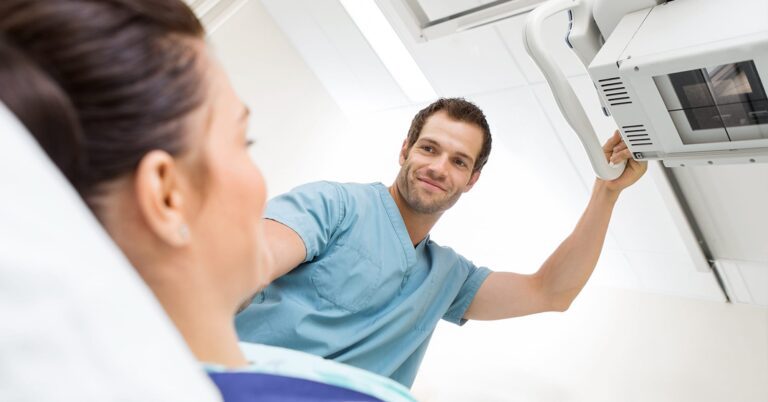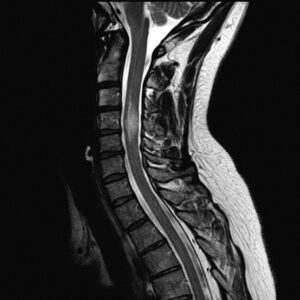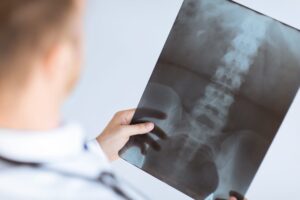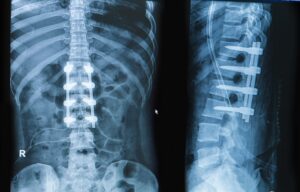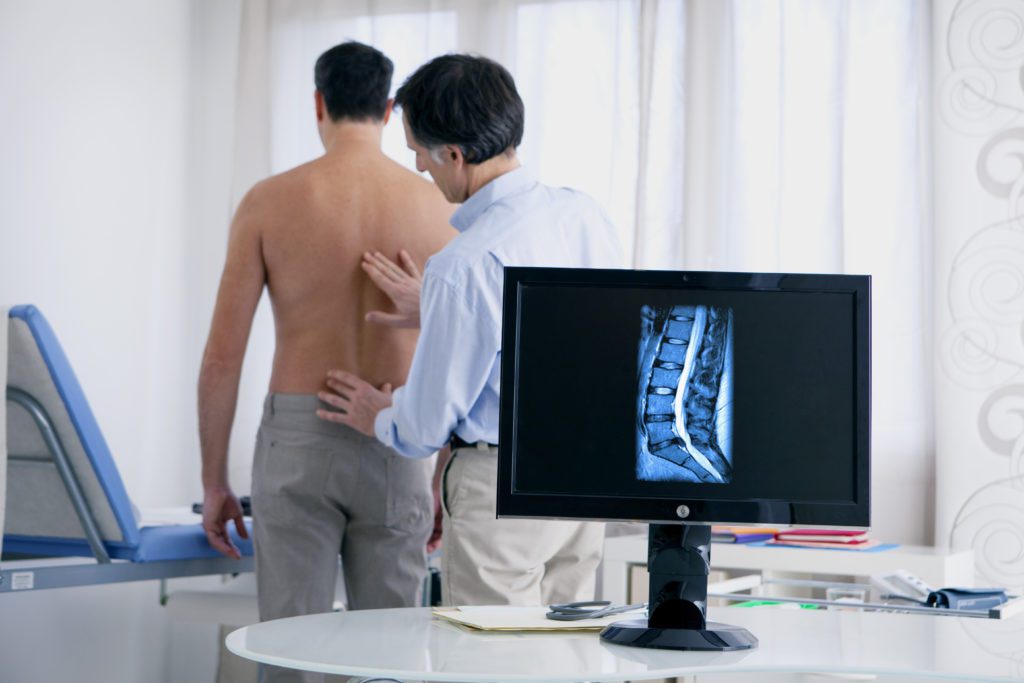After you meet your technologist, you’ll lie down on the X-ray table to receive an anesthetic to numb an injection site along your spine followed by an injection of contrast dye. The injection typically feels like nothing more than slight pressure. If your doctor requests it, we will also collect and send a small sample of cerebrospinal fluid to a laboratory for further testing.
Your technologist may ask you to lie on your side or your stomach, and the X-ray table will be tilted at different angles. This helps the dye move through the spinal canal and makes the nerve roots and spinal cord easier to see on the scan. Next, as you lie face-down on the X-ray table, your technologist will use fluoroscopy to capture a continuous series of detailed X-ray images. Your technologist will ask you to lie as still as possible while taking the radiographs.
Your doctor may also order a CT scan to be performed immediately after the X-rays, while the dye is still in your body. The CT scan provides even more detail about soft tissues, such as root nerves, in the spinal canal.
A myelogram usually takes 30–60 minutes. A CT myelogram, using a CT scan as well as traditional X-rays, may take an extra 15–30 minutes.
One of Touchstone Medical Imaging’s radiologists will study the images taken during your myelogram and send a detailed report to your doctor, who will discuss the results with you. Your doctor will advise you about your treatment options and inform you if you need a follow-up scan to further examine any problem areas or track changes in your condition over time.
To prepare for your myelogram at Touchstone Medical Imaging, we may instruct you to:
– Stop eating for a specified number of hours before the test.
– Discontinue or adjust certain medications, including blood thinners, antidepressants and diabetes medicines.
– Arrange for a ride to and from the imaging center.
– Wear comfortable clothes that you can easily remove.
– Leave jewelry at home.
Pregnant women should not receive a myelogram. For others, this test is safe as it employs a very low amount of radiation, according to the American College of Radiology.

